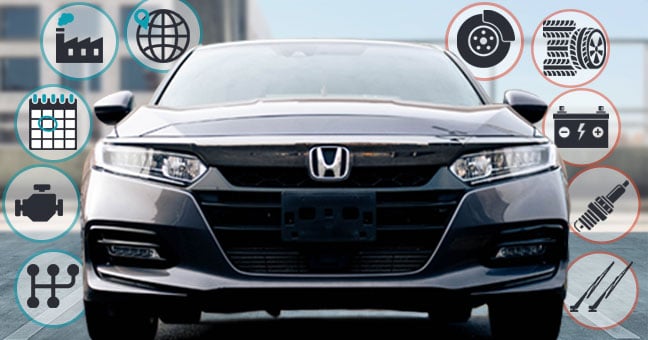

Jan 11 2022
Identifying the correct vehicle details and part fitment data by VIN is valuable for many repair shops, parts suppliers, and any other business dealing with the maintenance and service of vehicles. However, VIN data and part fitment data are quite different and therefore not commonly sourced and licensed under the same roof.
Typically, a VIN database and parts fitment catalog will need to be licensed separately and associated or mapped to each other, in order to identify parts for a specific vehicle by VIN. In this article, we cover what to expect from each database as well as how your business may go about identifying vehicle parts by VIN in the most efficient manner.
A VIN database can provide all features and specs installed on a vehicle at the time of manufacturing. At the core of a VIN database are the details encoded in the VIN pattern (positions 1-8, 10, and 11). Some of these core details include year, make, model, sometimes trim, and engine, which are all that are needed to identify the corresponding part fitment information. Reference this infographic for great detail on what to expect from VIN pattern decoding.
Some additional data that can be obtained beyond the VIN pattern, commonly referred to as a “VIN explosion,” may include such vehicle features as specifications and standard/optional equipment.
VIN data and vehicle parts data are quite different. While some VIN databases get into great detail about the vehicle, including engine and transmission details, tire size, color codes, optional equipment/accessories, etc., they do not capture anything related to vehicle parts or fitment data. A parts fitment database will describe part numbers, brands, part types, and other qualifiers to assure certain parts are compatible with a corresponding VIN. Like a VIN database, a parts fitment database requires constant updating and maintaining.
The Auto Care Association’s ACES (Aftermarket Catalog Enhanced Standard) and PIES (Product Information Exchange Standard) catalogs are the most standardized solution in the industry, and provide a standard frame of reference to describe the following:
Though the two databases provide much different data, it is valuable for some businesses to have access to both. The starting point for accessing parts fitment data is typically by year, make, model, and sometimes trim. This is also a common alternative way to retrieve vehicle data in place of the VIN. However, leveraging the VIN to identify both vehicle data and parts data can help increase both accuracy and efficiency especially when the ACES standard is used.
So, how can part fitment data be accessed by VIN if they are two separate databases? As mentioned earlier, some VIN databases such as DataOne’s, offer a mapping (or a bridge) between the two databases. With DataOne’s mapping to Auto Care Association’s ACES, users decode VINs and are returned the appropriate ACES IDs needed to correlate parts.
Whether you are already leveraging ACES and looking for a VIN solution to go along with it seamlessly, or interested in implementing both databases, we’d be happy to discuss!